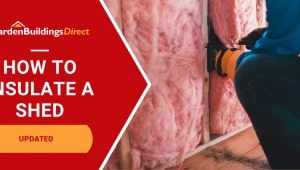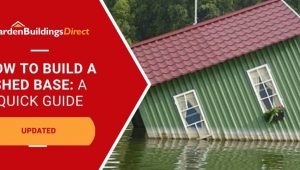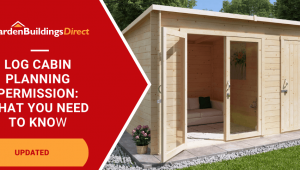Jump to:
Can you live in a shed? It’s a question more people are asking as space and housing costs rise. But before you start planning for it in your garden, there are rules you need to know. Keep reading, and we’ll break down the rules, the risks, and the reality of living in one.
Can You Live in a Shed in the UK?
Not without a lot of changes to meet the legal requirements. Most garden sheds aren’t built for living; they’re mainly for storage. They lack adequate insulation, running water, bathroom facilities, safe heating, and fire-proofing, all of which are essential for everyday life.
There were attempts to live in sheds as guest rooms or tiny homes, but councils often reject them. The main reason is that the outbuildings don’t meet minimum safety and living standards.
In 2023, a landlord in Kings Langley, Hertfordshire, was fined £8,000. The council declared the shed unfit to live in and issued a Prohibition Order. The landlord ignored it and paid the price.
Without some serious work to upgrade the shed from a wooden box, moving into a shed would not only be uncomfortable and unsafe but also against the law.
As an extra room of the house, a livable shed could also lead to a change in your council tax band, subject to the Valuation Office Agency.
Can a Shed be Used as a Home?
Sheds aren’t classed as homes in the UK. The law only allows them for storage or leisure use, like a bar shed or retreat. Under permitted development rights, you can put one up without planning permission, but that right doesn’t extend to using it as a place to live.
If you’re looking for a high-quality shed for storage or leisure use, our shed buying guide can help you choose the right type, size, and material to suit your garden and needs.
Planning permission isn’t necessary as long as:
- The shed must be under 2.5 m at the eaves, or 4 m for a detached dual-pitched roof.
- It doesn’t cover more than 50% of your garden area.
- It remains a single-storey structure.
- It isn’t used as a separate home or for rental purposes.
You can add electricity, lighting, or basic heating, as long as it stays within permitted development rules.
What You’d Need to Make a Shed Livable
Turning a shed into a home takes more than just popping a bed inside. Even with planning permission, you’d still have to meet building rules, like:
- Insulation in the walls, roof, and floor.
- A water supply and drainage for a sink or shower.
- Toilet and bathroom connected to the mains or an approved system.
- Heating and ventilation for year-round comfort.
- Electrical wiring completed to Part P standards with safety switches fitted.
- Fire safety measures, such as fire-resistant materials and an escape route.
So yes, it can be done, but it’s a big job and costs more than most expect.
Can You Register a Shed as a Separate Address?
It’s possible. A shed won’t count as a home unless it has a kitchen, bathroom, and proper sleeping space. Councils won’t approve it otherwise.
As a separate address, the building would then have its own council tax band.
Can You Sleep in a Shed in the UK?
It’s unlikely that the police would knock on the door to stop you from sleeping in your own shed. However, using it for guest accommodation or long term family sleeping is much more legally risky.
Using it for regular overnight stays isn’t allowed without planning permission and compliance. It’s even more restricted as a permanent home.





